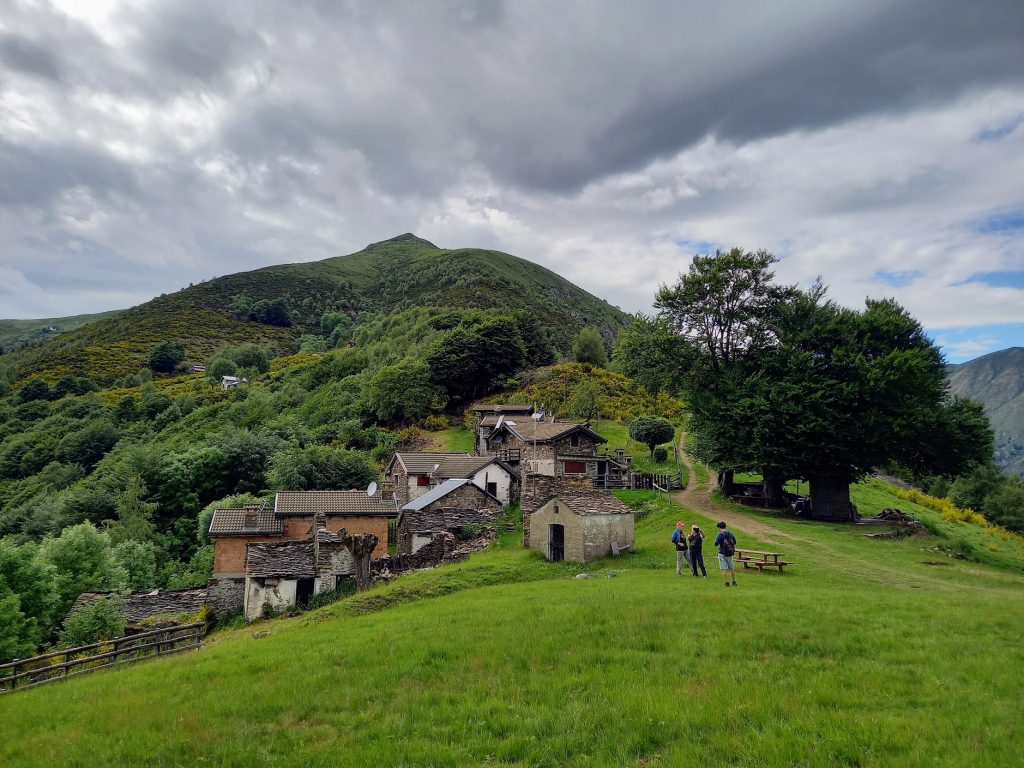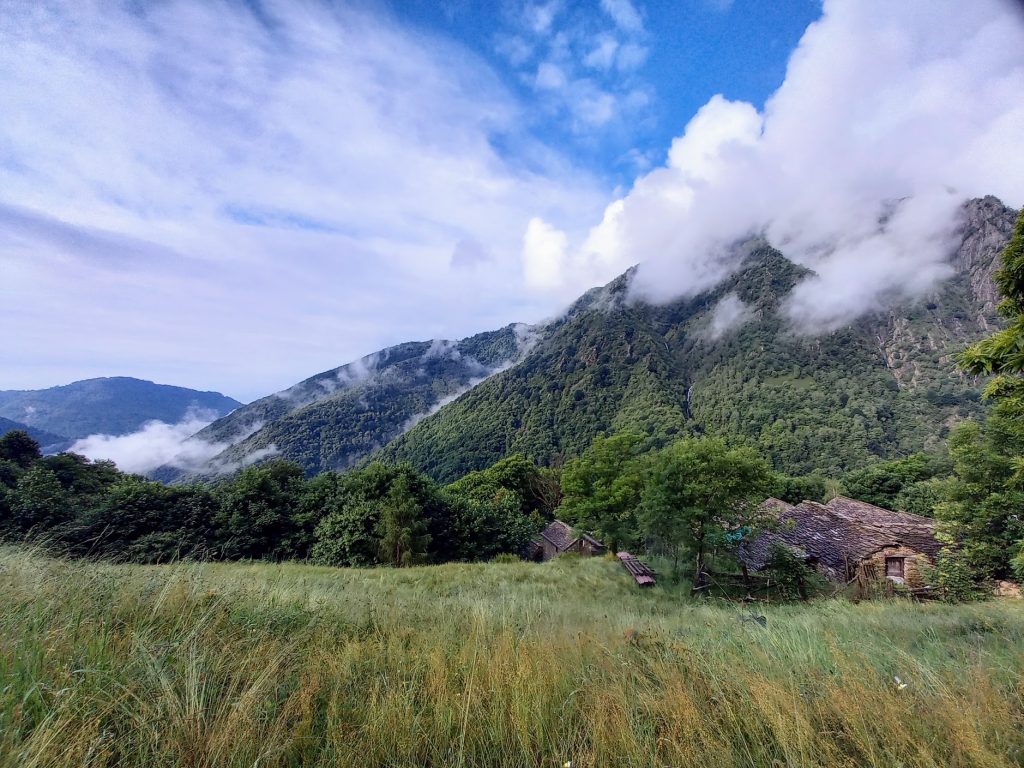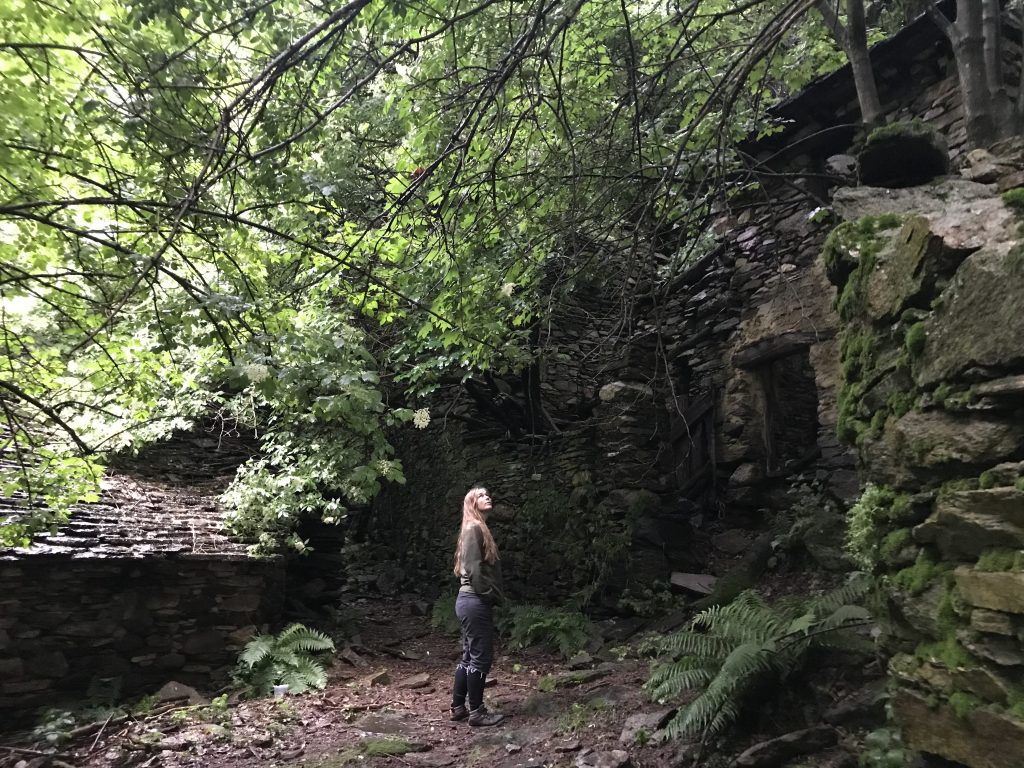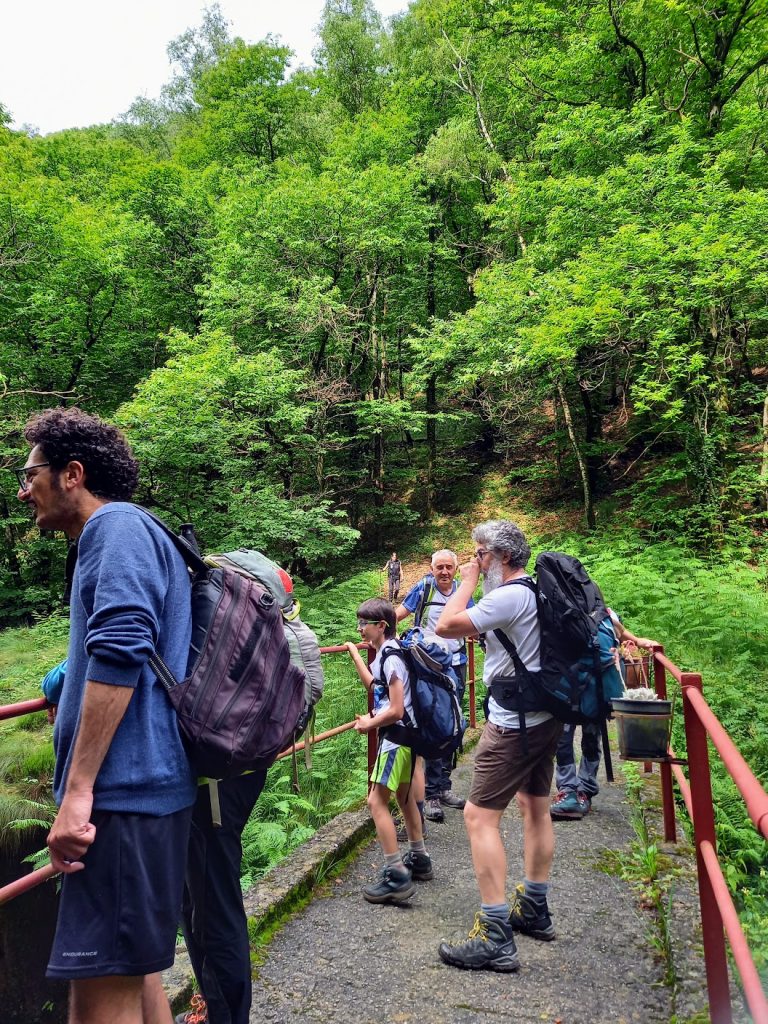Blog
Here we write about project news and researches we are currently undertaking. During June 2024, we share reflections and experiences from the “VAL GRANDE Research Project” in Northern Italy. You can read more about the thoughts behind this research on the PROJECTS page.
Siamo arrivati!
Miazzina, June 6th 2024
After a couple of days in trains, traversing from Denmark through Germany and Switzerland to the Northern edge of Italy, we finally arrived in the village of Miazzina. On a mountain slope, with the Val Grande in our backs, we have the gorgeous Lago Maggiore in front of our eyes.
For 3 weeks, this will be our base as we explore the landscape – the mountains, the villages, the lowlands and the peaks – as well as the history of the local song culture. All this as part of an artistic research made possible with support from Culture Moves Europe.
We are meeting the exceptional goodwill and kindness of our local partner, Gruppo Escursionisti Val Grande, as well as the local organisation Comuniterrae, who are passionately dedicated to the cultural and natural preservation of the area. For the welcoming dinner, we discussed the different activities and encounters they will help us to set up.
We cannot wait to get started!
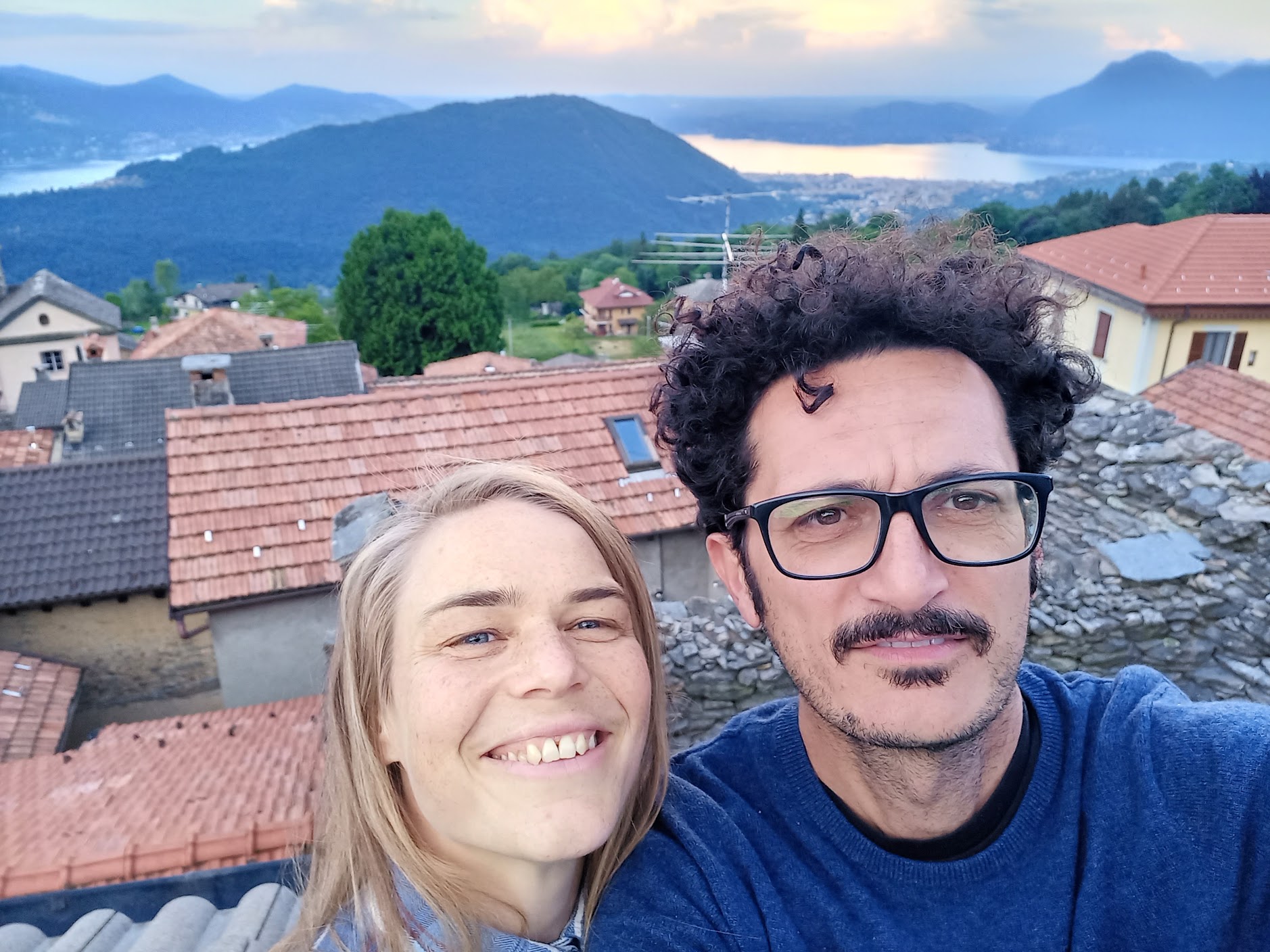
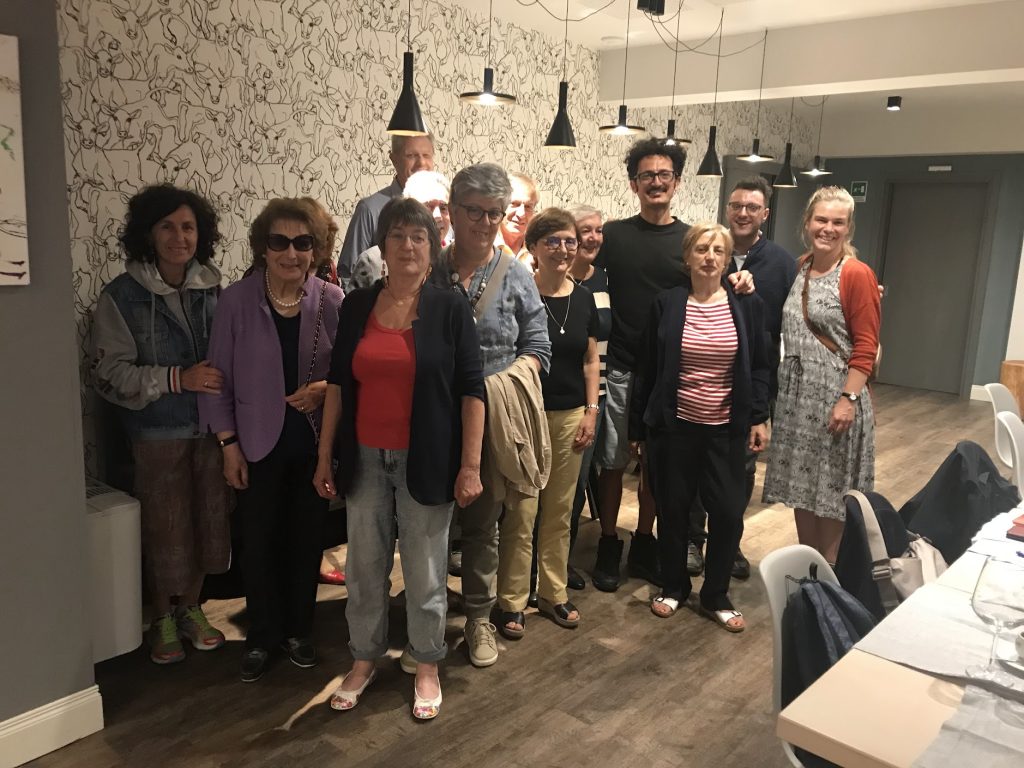
SONG ENCOUNTER
Trontano, June 7th 2024
One of the highlights of this week was definitely meeting the group of women from Trontano; now in their 80s, they share a life long friendship, and for many years had the daily habit to meet in the evenings, singing songs together.
Our meeting developed into a lively musical encounter, as we were joined by the male group of singing hikers from Club Alpinisti di Villadossola.
All songs were in 2, sometimes 3-part harmonies – and everyone seemed to know their place in the music to the bone.
Immersed in music, we just sat there, taking in this beautiful everydaily ritual of singing as a way of being together. Not performing for anybody but themselves, it was an experience of how songs can constitute and affirm community.
ADDITIONAL INSPIRATION: to get familiar with the song traditions of the area, we have found this podcast by Valentina Volonté incredibly helpful, offering both context and song examples:
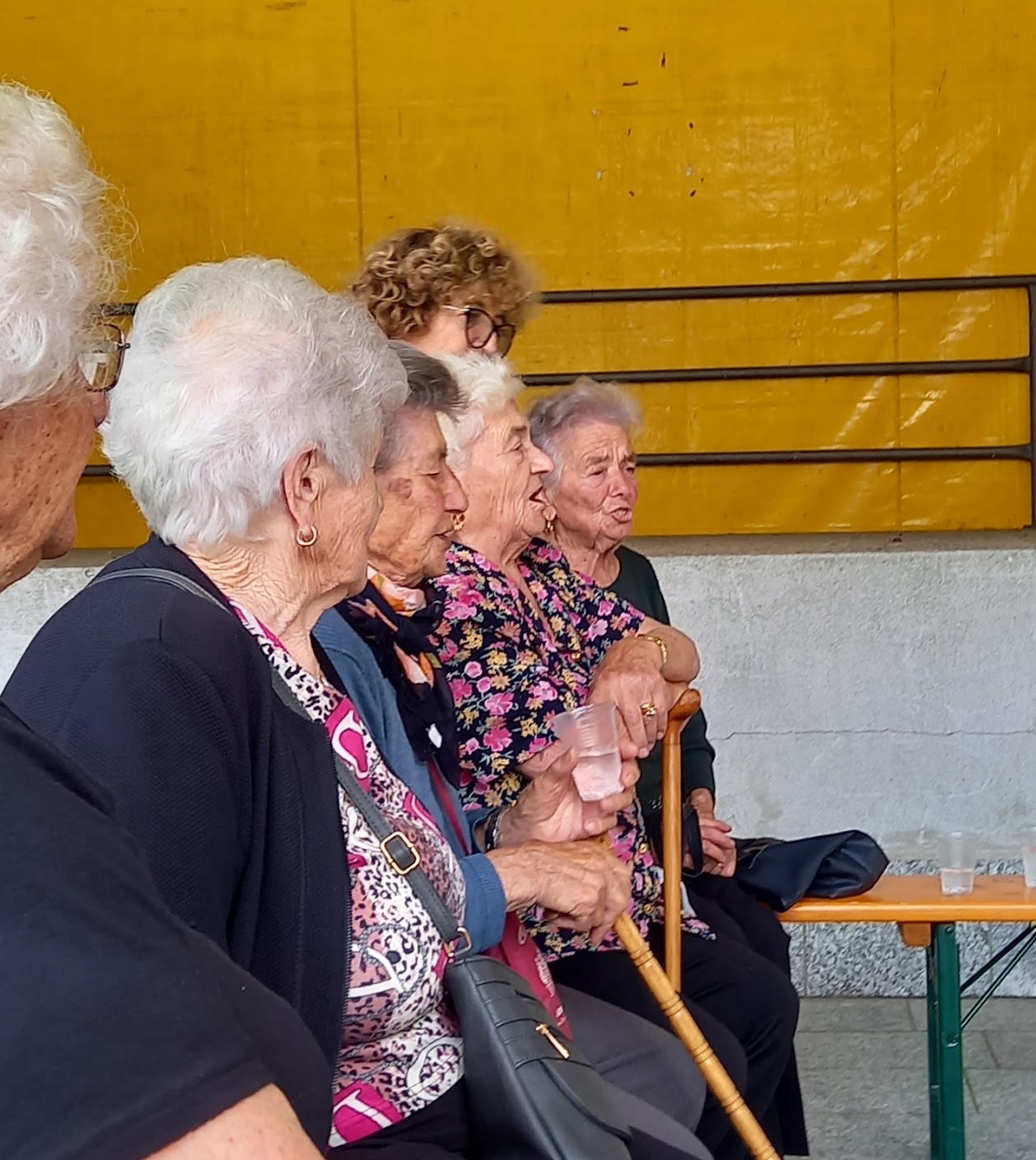
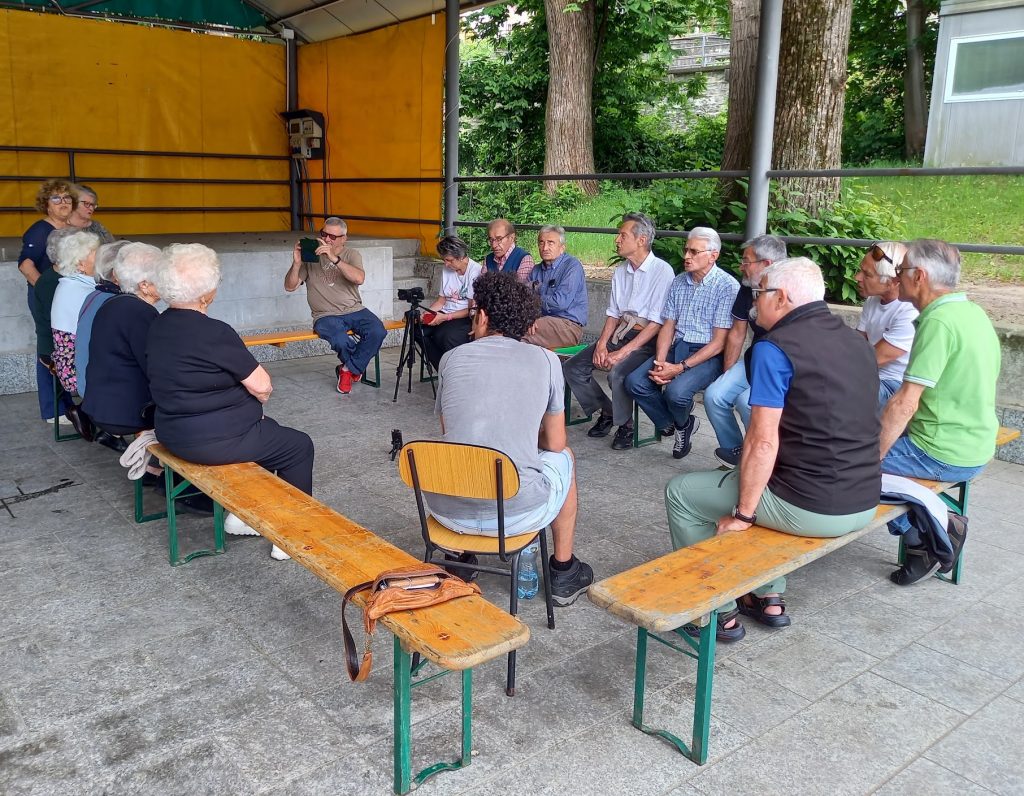
Frattura Vecchia – Old cracks
Entering step by step into a landscape full of history, religion, rituals and traces of lives lived – we are reminded of a poem by Canadian poet & scientist Rebecca Elson, who wrote several poems while staying in Italy. This one speaks particularly to our research:
Frattura Vecchia
– Rebecca Elson
Breaking bread beside the spring,
Yourself mute
And the village going to the mountain
Stone by stone,
A snake moves towards the water,
mythical, precise remote,
And you are taken by a sudden temporality,
like water from a dry hill –
Each bit of landscape
A piece from somewhere else
Till, lying on your back
There is no mountain,
only sky,
only a cloud
Running
KEEPER OF HISTORY
Miazzina, June 10th 2024
We spend our morning in conversation with Donatella Nebulosi, a living archive that guards the history and images from Miazzina with care and dedication! A former teacher from Milano, she is now resident of the village, an active member of Comuniterrae – and the only librarian in town.
She shows us her big collection of historical photos, portraying the rural life that was lived in the Val Grande area up until 50-60 years ago. A hard life, where people survived on a mix of terrace-farming and animal herds. We hear stories of men going away to France and Switzerland to work & earn money for the summer; we hear stories of women, incredibly strong, carrying anything from hay to rocks to furniture on their backs, up the mountain.
We hear about the clever milk traders from Miazzina, who found a way to transport milk in jugs, attached sub-surface to the marble transport boats going to Milan. In this way, the milk stayed fresh all the way – and the traders avoided to pay tax! Apparently, they made themselves a fortune…
Later, she took us to see the local ‘baita fuoco’ (the fire hut) – a kitchen turned into a small museum of cooking artefacts. The walls are fascinating in themselves – turned completely black with soot after years of cooking over open fire.
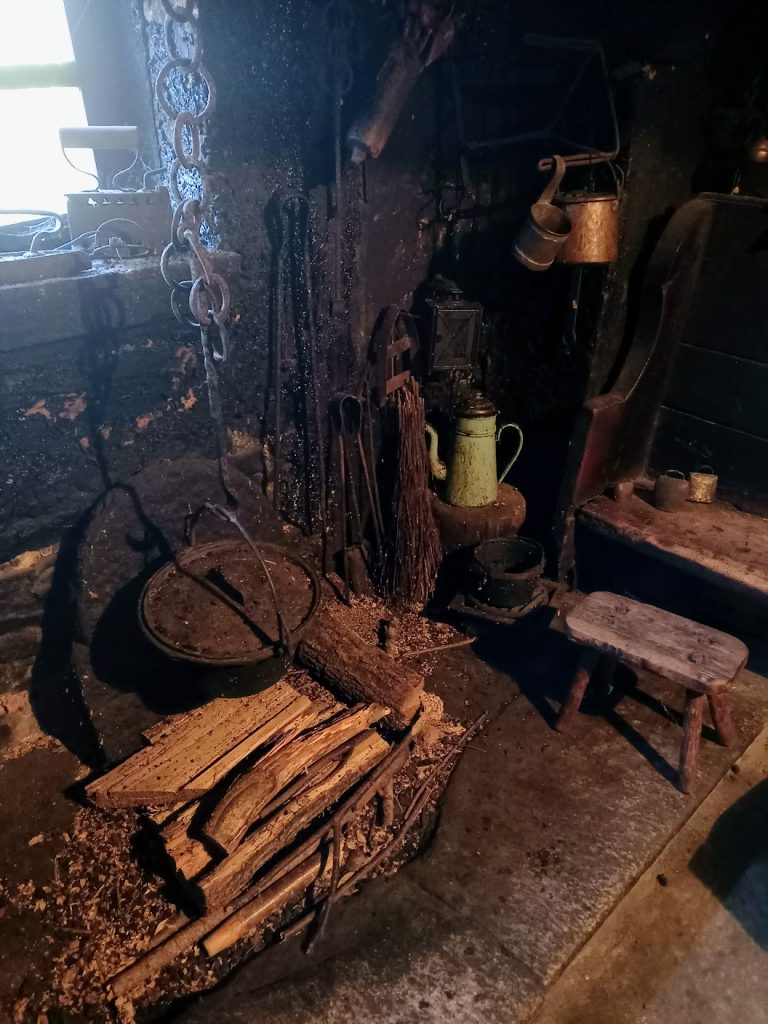
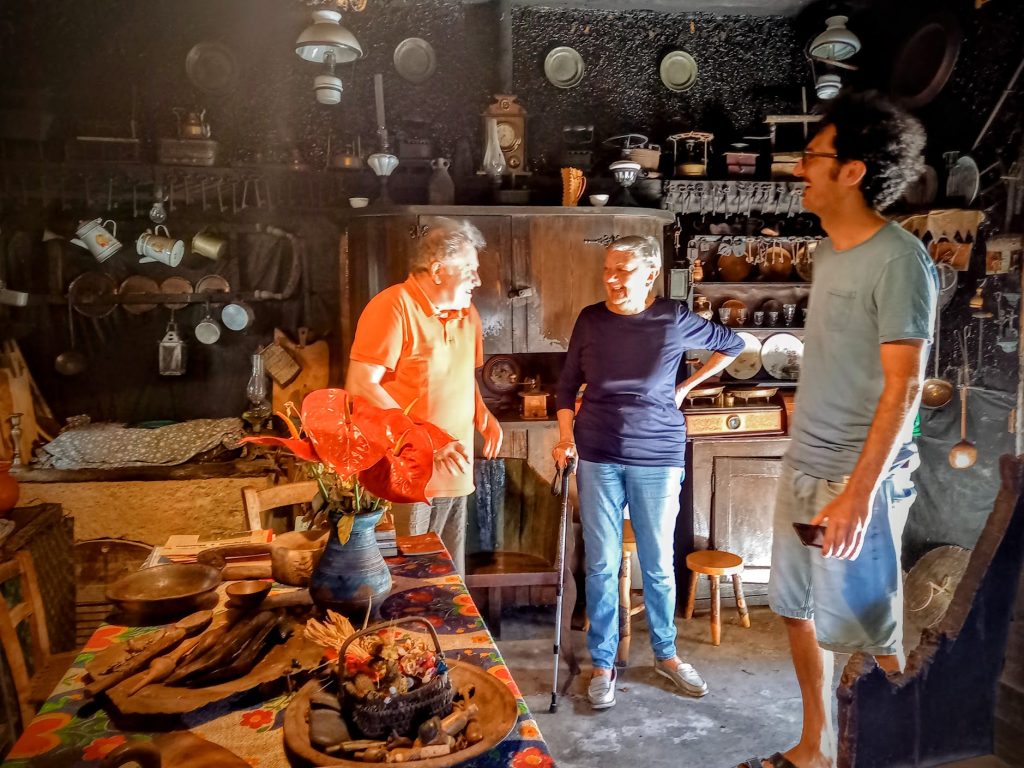
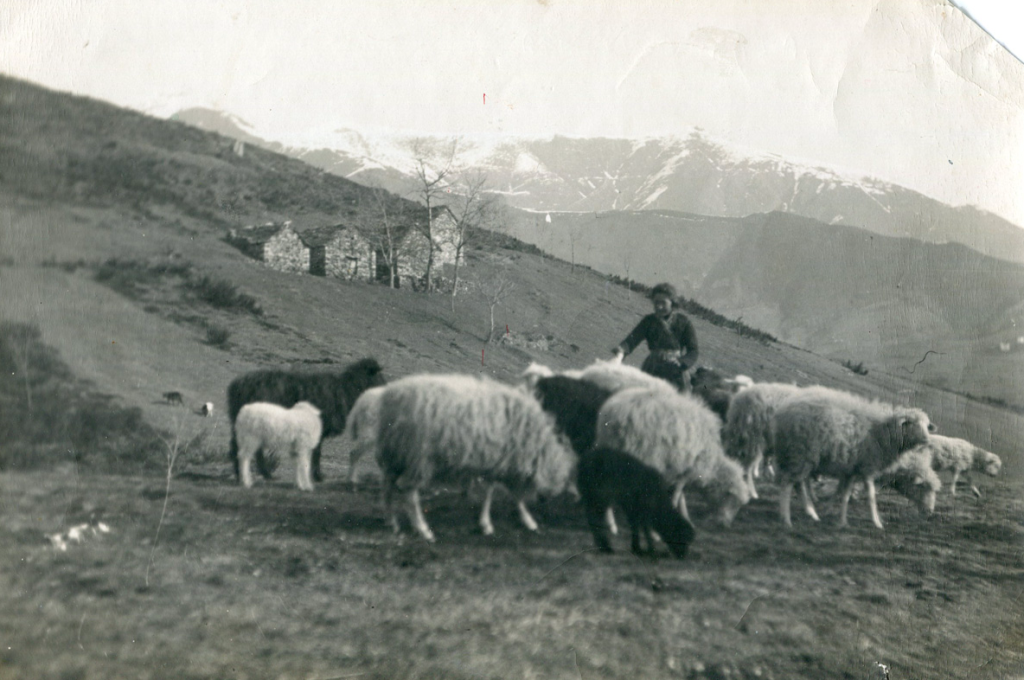
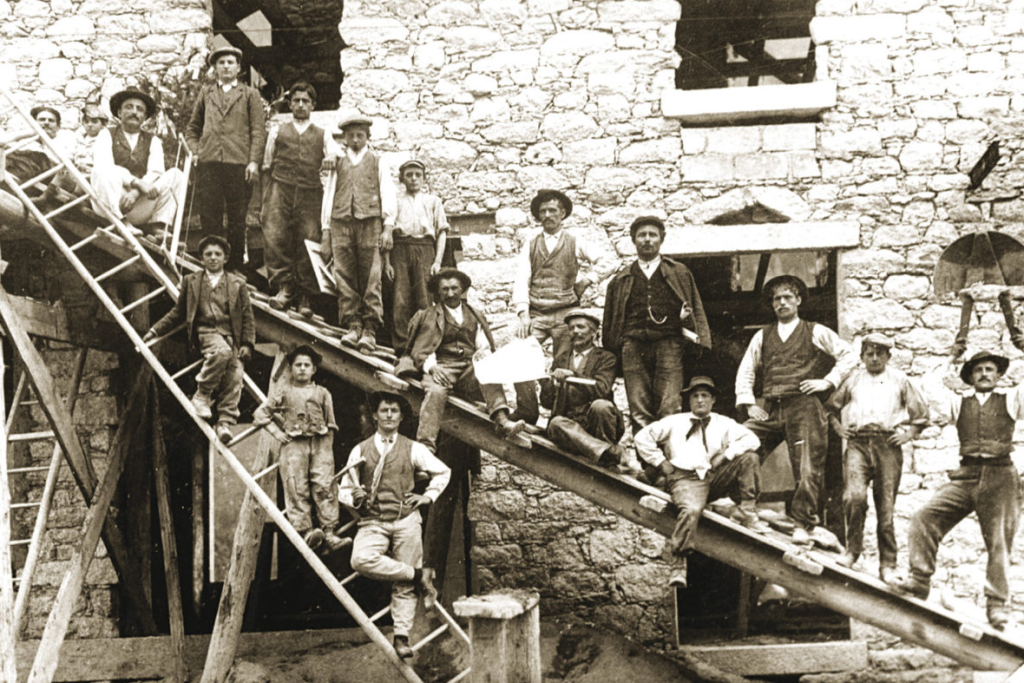
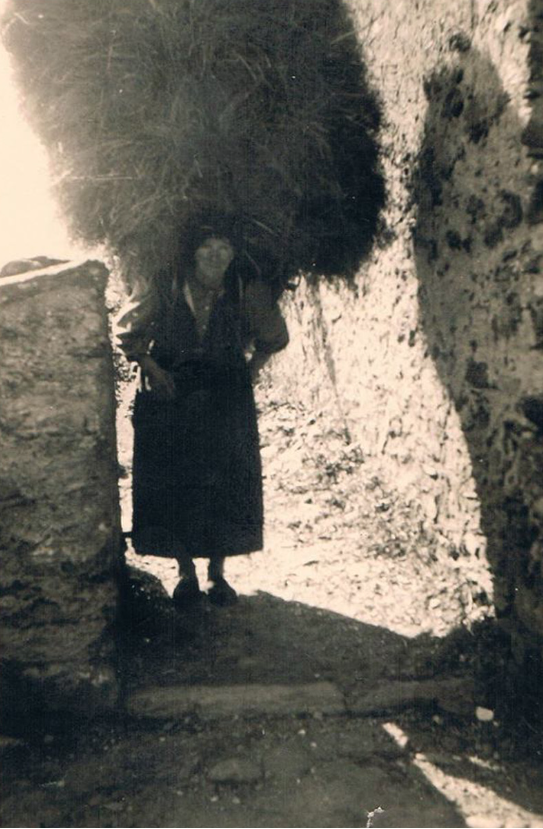
THE VALLEY OF SORROW
Verbania, June 12th 2024
We meet with president of Comuniterrae, Ivana Ronchi, and local writer Pietro Pisano for a talk in the library.
Pietro is a hiker and a ‘native’, born in this area and with a deep emotional connection to the mountains. While also deep into the political and historical research of the area, he refers to the Val Grande as ‘la valle del dolor’ – the valley of sorrow. Like Donatella, he describes the extreme hardship of life on the mountain, where the people where exposed to adverse weather conditions and high mortality rates. Listening to his tales, the image of the woman carrying incredible burdens on her back, reappears. She seems to be almost a mythological character here. Strong, fierce, enduring, awe-inspiring.
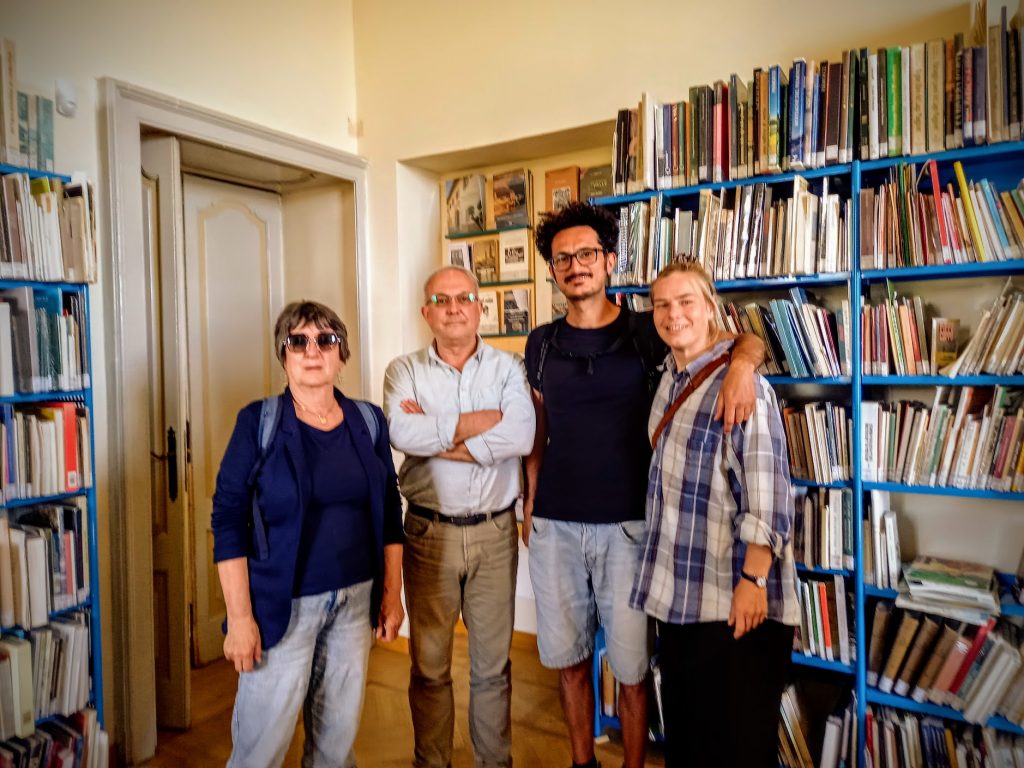
HIKING WITH HISTORY (and rain)
Scareno-Piaggia-Aurano, June 15-16th 2024
During the WWII, the Val Grande area became a base for the partisan’s resistance fight against the fascist-nazist coalition.
This weekend we join a hiking excursion, organised annually by the hiking guides’ association Cooporativo Val Grande and the Dragone di Piaggia, commemorating the battles fought – and lost – in 1944.
There is a path going through the Val Grande to Switzerland, named after the famous partisan, Nino Chiovini. We are supposed to walk part of the trail, but due to heavy rain fall all day Saturday, the route is reduced. We walk from Scareno and arrive in the alpe village of Piaggia, soaked to the bone!
Making ourselves warm again with coffee, card games and a solid mountain stew for dinner, we rise the next morning to a cleared up sky, and another stretch of walking, finishing off in Aurano with a community dinner at the local Circolo.
What makes the biggest impression on us, are the stories of the young men – teenage boys, really – who for the most part made up the partisan army. Idealists with a need to take action, but without proper training, equipment and knowledge of the local territory, many of them died in accidents and in tragic ways. Again, this landscape turns out to hold stories of sorrow that is hard to bear.
